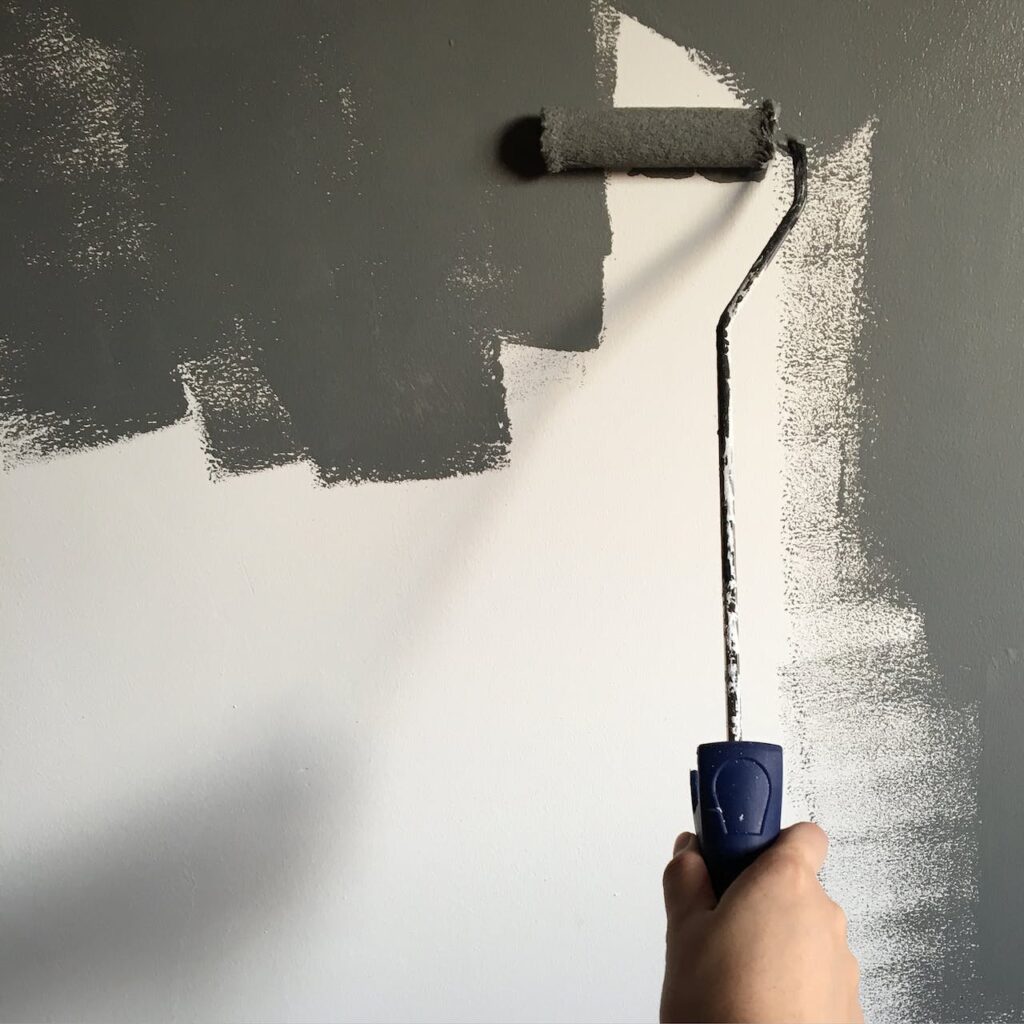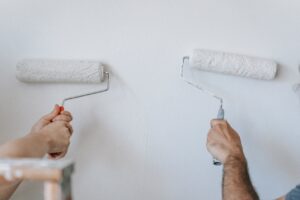Discover the hidden formula behind achieving a stylish home in Concord. Have you ever wondered how some houses in Concord effortlessly exude trendiness and sophistication? The secret lies in the collaboration between painters and designers. By working together, these professionals can transform any residence into a fashionable haven that perfectly fits your aesthetic preferences. Get ready to unlock the key to a truly remarkable home transformation.
Table of Contents
ToggleThe Impact Of Painter-Designer Collaboration On Home Aesthetics
Collaboration between painters and designers has a remarkable influence on the overall aesthetics of homes. When these two creative forces come together, the result is nothing short of extraordinary. Let’s explore how painter-designer partnerships elevate the look and feel of homes, creating visually stunning interiors.
The power of collaboration lies in the seamless integration of home decor elements with fashion and style. Painters work closely with designers to understand their vision and bring it to life through color palettes, textures, and finishes. By collaborating, they can achieve a cohesive design that enhances the overall aesthetic appeal.
Here are some key ways in which painter-designer collaboration impacts home aesthetics:
Elevating Color Schemes
Painters and designers work hand in hand to select the perfect colors for each room. They consider factors such as natural light, room size, and desired mood to create harmonious color schemes that complement the overall design concept.
Creating Focal Points
Collaboration allows painters and designers to identify focal points within a space and highlight them through strategic paint choices or artistic techniques. This helps draw attention to specific areas or architectural features, adding depth and visual interest.
Enhancing Texture And Finish
By collaborating closely, painters can apply various techniques such as faux finishes or texture effects suggested by designers. These techniques add dimensionality to walls or surfaces, giving them a unique character that enhances the overall aesthetic appeal.
Balancing Contrast
Painters collaborate with designers to strike the right balance between contrasting elements in a space. Whether it’s combining bold colors with neutral tones or integrating different patterns or materials, this collaboration ensures that contrast is used effectively without overwhelming the overall design.
Enhancing Interior Design Through Collaborative Painting Techniques
Collaboration between painters and designers has become the secret sauce behind trendy Concord homes. By exploring innovative painting techniques, interior design is taken to new heights. These collaborative efforts unleash the potential for stunning interiors that truly captivate.
Innovative Painting Techniques For Enhanced Interior Design
When painters and designers work together, they create a harmonious blend of visual art and interior architecture. This collaboration allows them to experiment with mixed media, incorporating various painting styles into the overall design concept. By pushing boundaries and thinking outside the box, they can transform ordinary spaces into extraordinary ones.
Here are some key ways in which painters collaborate with designers to enhance interior design:
- Creating Unique Design Elements: Painters bring their artistic expertise to the table, collaborating with designers to develop one-of-a-kind design elements that add personality and flair to a space.
- Playing With Colors: Painters work closely with designers to select color palettes that compliment the overall aesthetic of a room, creating a cohesive look and feel.
- Adding Texture And Depth: Through various painting techniques such as faux finishes or mural artistry, painters add texture and depth to walls, elevating the visual impact of a space.
- Enhancing Lighting Design: Painters understand how different colors interact with light sources. They collaborate with lighting designers to ensure the perfect balance between natural and artificial lighting.
The Power Of Collaboration In Interior Design
The collaboration between painters and designers goes beyond just aesthetics; it also influences functionality and practicality within a space. For example:
- Teaching Artists: Some painters take on teaching roles within schools or art institutes, sharing their knowledge with aspiring interior designers or other artists.
- Botanical Artists: Collaborating with botanical artists can bring nature-inspired elements into interior design projects, creating a calming atmosphere or adding an organic touch.
- Graphic Design Connection: Painters who have a background in graphic design can seamlessly integrate digital art into interior spaces, merging the physical and virtual worlds.
By combining their unique skill sets and perspectives, painters and designers can transform ordinary spaces into extraordinary ones. The secret to trendy Concord homes lies in the power of collaboration between these creative minds.
Creating Unique Spaces: Power Of Painter-Designer Partnerships
Collaboration between painters and designers is the secret sauce that brings trendy Concord homes to life. By unlocking the power of these partnerships, homeowners can create one-of-a-kind spaces that truly reflect their personal style and taste.
When painters and designers join forces, magic happens. Witnessing their collaboration in action is like watching a symphony orchestra perform – each member playing their own instrument but coming together to create a harmonious masterpiece.
Designers bring their expertise in color theory, spatial planning, and aesthetics to the table. They are like the creative directors of a project, envisioning how each room should look and feel. Painters, on the other hand, are the artists who bring those visions to life with their brushstrokes and attention to detail.
Together, painters and designers have the ability to transform any space into something extraordinary. They understand how color choices can affect mood and atmosphere. A designer might suggest bold hues for an accent wall, while a painter knows just how to execute it flawlessly.
The partnership between painters and designers extends beyond just choosing colors. Collaborating on texture selection, finishes, and even furniture placement allows for a cohesive design that flows seamlessly throughout the entire home.
Picture this: a landscape architect working alongside a studio graphic designer. The result? A living room that feels like an indoor garden oasis with stunning botanical-themed murals adorning the walls.
Painters collaborating with writers or media professionals can create inspiring home offices or cozy reading nooks that ignite creativity. The possibilities are endless when different talents come together under one roof.
Transforming Concord Homes: How Painters And Designers Work Together
Collaboration between painters and designers is the secret sauce behind trendy Concord homes. This dynamic partnership brings together the artistic vision of designers with the technical expertise of painters, resulting in exceptional living spaces that stand out from the crowd.
Seamless Teamwork For Outstanding Results
The collaboration between painters and designers in Concord homes is all about seamless teamwork. Designers provide their creative insights, color schemes, and overall vision for the space, while painters bring those ideas to life through their skills and craftsmanship. Together, they create a harmonious blend of aesthetics and functionality.
The Dynamic Process Of Collaboration
The process of collaboration between painters and designers is an exciting journey. It starts with detailed discussions where both parties exchange ideas, preferences, and inspirations. Designers share their vision for the space, including concepts such as color palettes, textures, and finishes. Painters then translate these ideas into reality by selecting the right paints, applying techniques like faux finishes or textured effects, and ensuring precise execution.
Throughout the project, constant communication is key. Designers provide feedback on color choices or adjustments needed to align with their vision. Painters offer insights into practical considerations such as surface preparation or paint durability. This back-and-forth dialogue ensures that both parties are on the same page throughout the transformation process.
From Ordinary To Extraordinary
The collaboration between painters and designers has a transformative effect on ordinary houses in Concord. Through their combined efforts, they elevate living spaces to new heights by adding personality, style, and character. Whether it’s creating an accent wall that becomes a focal point or using colors strategically to enhance natural light or architectural features—painters collaborating with designers have a knack for turning houses into extraordinary homes.
Unveiling Hidden Potential: Painter-Designer Collaborations In Concord Homes
Painter-designer collaborations have become the secret to trendy homes in Concord. These partnerships reveal hidden potential within residences, transforming them into stunning spaces that reflect the unique style and personality of homeowners.
Witnessing the magic that happens when painters and designers join forces is truly remarkable. By combining their expertise, they bring out the best in each other’s work, resulting in homes that are both visually appealing and functional.
Exploring examples of these collaborations provides a glimpse into how they unlock untapped beauty within homes. Let’s take a closer look:
Discover How Painter-Designer Collaborations Reveal Hidden Potential Within Homes
- Color Consultation: Painters and designers work together to select the perfect color palette for each room, considering factors such as lighting, furniture, and personal preferences. This collaboration ensures harmony between paint colors and design elements.
- Accent Walls: By strategically choosing an accent wall and coordinating its color with the overall design scheme, painters and designers create focal points that enhance the aesthetic appeal of a room.
- Texture Play: Painters can add texture to walls using techniques like faux finishes or stenciling. Designers then incorporate this textured element into their design scheme, adding depth and visual interest to the space.
- Custom Finishes: Collaborations allow for custom finishes like distressed or weathered looks, which can be applied by painters to give furniture or cabinets a unique touch. Designers can then integrate these pieces seamlessly into their vision for the home.
- Artistic Murals: Working hand-in-hand, painters and designers can create stunning murals that transform walls into works of art, making a bold statement within any space.
By teaming up with painters, designers can elevate their creative vision while ensuring impeccable execution through skilled craftsmanship.
Painter-designer collaborations are revolutionizing home transformations in Concord by revealing hidden potential within residences. These partnerships showcase the power of combining different artistic perspectives to create homes that are both stylish and functional.
Elevating Concord Home Interiors Through Collaboration
Collaboration between painters and designers is the secret to achieving trendy and stylish Concord homes. By working together, these creative professionals bring out the best in each other, resulting in truly remarkable interior spaces. The impact of painter-designer collaboration on home aesthetics cannot be overstated. When painters and designers join forces, they combine their expertise to create a harmonious blend of color, texture, and design elements that elevate the overall look and feel of a home.
Enhancing interior design through collaborative painting techniques allows for endless possibilities. Painters bring their mastery of color theory, paint application techniques, and knowledge of different finishes to the table. Designers contribute their keen eye for detail, understanding of spatial arrangement, and ability to curate cohesive design schemes. Together, they transform ordinary spaces into extraordinary ones that reflect the unique personality and style preferences of homeowners.
If you’re looking to revamp your Concord home with a touch of trendiness and sophistication, consider collaborating with both painters and designers. By leveraging their combined skills and expertise, you can unlock the hidden potential within your living space. Don’t settle for mediocrity.
Looking To Elevate Your Home’s Aesthetics Beyond Just A Paint Job?
Imagine the synergy of a skilled painter collaborating with an interior designer. At PaintMasters, that dream is our reality. Established in 1994, our legacy in Concord, California and the broader Contra Costa region speaks to our commitment. From impeccable exterior painting to intricate interior detailing, we pride ourselves on getting it right the first time. And it doesn’t stop at painting – our expertise spans acoustic removal, drywall repair, and texturing, ensuring a holistic solution for all your home improvement needs.
But here’s our standout offering: our adeptness at blending painterly precision with design inspiration. We not only refresh spaces, but we infuse them with character, be it homes or commercial establishments like chic restaurants. Yearning for a statement wall or dreaming of a deck that mirrors nature? Our staining services for walls, cabinets, doors, and decks hold the promise of transformation.
Let PaintMasters redefine and rejuvenate your spaces with unparalleled finesse. Reach out now, and embark on a journey of design re-imagination. Your dream home awaits!


